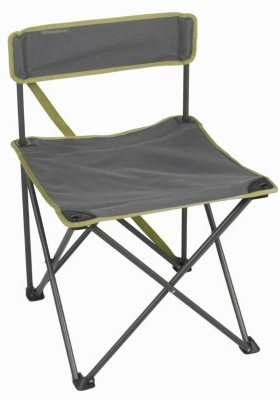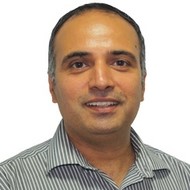I was recently invited to give a talk at the Rotary Club of Madras South and they very kindly recorded my talk and put it up on youtube. I have embedded the link below.
Students from the Asian College of Journalism visited our store and did a short segment about Old is Gold Store. It was heart warming to see our future journalists being so professional and interested in socially relevant causes. Enjoy their presentation.
Today’s youngsters think that technology can take care of their parents while they live abroad, claims a senior citizen.
AD: Hi, what’s up? You seem pretty upset.
BC: Just got back from my neighbour’s place. I get all worked up when I see someone choose another country as their home and expect technology to bridge the gap between them and their folks.
AD: I don’t understand…
BC: Most people settled abroad think that they’ve done their duty by calling their parents a couple of times a week. They simply don’t understand that it doesn’t make up for their absence back home.
AD: Not all of them.
BC: Even if they take a vacation, they would rather holiday at some exotic place than visit their parents.
AD: Look, life abroad is not as rosy as you think it is… Besides, in today’s world, you have to find ways of keeping in touch — e-mails, Facebook, chats…
BC: Not all senior citizens are comfortable with technology. It’s so difficult to learn something new after a particular age, especially for those who have never stepped out of their homes.
AD: There are so many ways to learn these days… And there’s online help as well.
BC: What if even getting online is a problem for them?
AD: But it’s so easy to operate services like Skype.
BC: There we go again — even if they learn to operate a laptop, turn the Internet on and sit in front of the camera, they begin to panic if the image freezes or the audio doesn’t work for a few seconds, because they don’t know what’s going wrong.
AD: But operating a mobile is easy, right? And there are several apps that can help them to…
BC: You’re looking at things from your viewpoint. You were born with all this technology around you. In their case, they are having their grandchildren teach them things. There’s a big difference… Some of them are uncomfortable, others get intimidated.
AD: So why are you blaming technology for it?
BC: Because its presence is what makes today’s generation think that it’s fine to keep in touch with parents back home through some new-fangled device. They don’t realise that the older lot will also be forced to adopt the same technology in order to respond.
AD: But technology is getting friendly.
BC: Hardly! Electronic goods manufacturers are so keen on making products child-friendly or child-proof, but unfortunately, when it comes to the older lot, they show scant regard…
AD: Why, what do you want them to do?
BC: What about special mobile phones for senior citizens who are probably not very comfortable with the current smartphones or the tiny keypads in regular mobiles? What about computers that are voice-enabled…
AD: There are mobiles, computer keyboards and tablets designed especially for the older users.
BC: But I haven’t seen much on the shelves here. I hope you aren’t going to suggest that they buy these gadgets online…
AD: Don’t you think senior citizens need to embrace the changing world?
BC: You also need to consider the other problems of old age — failing eyesight, trembling hands, a nervous disposition, poor memory…
AD: That’s the reason why technology has ushered in a concept known as pervasive computing. Based on this, computers — equipped with sensors and requisite software — observe and learn more about a person’s habits non-intrusively. Soon, they become familiar with a senior citizen’s habits and take over as a guide, in case his memory fails him or if he forgets to do something, like take his medicines, for instance.
BC: Sounds good, but these things need to move from being a dazzling experiment to a way of life for us to feel their utility.
AD: So what are you trying to say? That technology is a senior citizen’s biggest enemy?
BC: You’re exaggerating, but the point is, people abroad must understand that filial duties go beyond swinging by once in a while and gifting their folks an iPad.
The original article is here.
(https://www.thehindu.com/sci-tech/technology/no-technology-for-old-men/article5656712.ece)
 The Allahabad High Court (HC) has asked the Uttar Pradesh government to expedite the formulation of rules for the safety of senior citizens in the state.
The Allahabad High Court (HC) has asked the Uttar Pradesh government to expedite the formulation of rules for the safety of senior citizens in the state.
Directing the government to make rules under the Senior Citizen Act and also to constitute a body to hear and redress problems being faced by the aged, the high court asked it to establish old age homes in every district.
These shelters, the court said, should be big enough to house 150 people and should be given proper staff and health facilities for which the state government should make budgetary provisions.
A bench of Justices Sunil Ambwani and Dinesh Gupta also expressed their dismay at the fact that while the Senior Citizen Act was passed by parliament in 2007, nothing serious had been done in Uttar Pradesh to get it implemented.
The government counsel told the bench that while the notification for implementation of the Act had been issued by the state government, the rules were being framed and were under process.
The court directed the principal secretary (social welfare) to issue a fresh notification and give a sworn affidavit of its implementation by Feb 10.
The court gave these directions Tuesday while hearing a public interest litigation filed by lawyer Junaid Ezaz with regard to senior citizens whose children were not looking after them.
You can read the original article here.
 A light-weight, portable dark grey-green chair with back support is easy to carry and deploy/fold. The chair has wide base legs that do not sink into the ground even when kept on sand. At 41 cm high, it allows a high seating comfort. Ideal to take to the beach or temple. The chair comes with 2 years manufacturer warranty and is certified to take up 110kgs of weight.
A light-weight, portable dark grey-green chair with back support is easy to carry and deploy/fold. The chair has wide base legs that do not sink into the ground even when kept on sand. At 41 cm high, it allows a high seating comfort. Ideal to take to the beach or temple. The chair comes with 2 years manufacturer warranty and is certified to take up 110kgs of weight.
Weights on 2.4 Kgs. Dimensions : 77 x 50 x 77 cm. Seat: height = 41 cm, width = 41 cm.
To buy, go here.
 Health insurance is more important for the elderly than the others, for the simple reason that, as age advances, one’s vulnerability to diseases and physical conditions increases. Thus, a medical emergency could result in severe financial crisis, unless covered under a comprehensive medical insurance policy. Adding to their apathy is the fact that there are many a number of Health insurers in the country who are not happy to provide senior citizens health insurance because of the higher loss ratios.
Health insurance is more important for the elderly than the others, for the simple reason that, as age advances, one’s vulnerability to diseases and physical conditions increases. Thus, a medical emergency could result in severe financial crisis, unless covered under a comprehensive medical insurance policy. Adding to their apathy is the fact that there are many a number of Health insurers in the country who are not happy to provide senior citizens health insurance because of the higher loss ratios.
The scenario now is changing. The Insurance Regulatory and Development Authority in one of its recent directives had asked general insurance companies to keep at least 65 years as the maximum entry age for a health insurance policy. This has helped increase the number of health insurance products for senior citizens in the Indian market. Many companies have no come up with health insurance policy specifically designed for senior citizens. For example, Star Health Senior Citizen Red Carpet Plan, Bajaj Allianz Silver Health and many more.
Elaborating a little on these plans, Star Health Senior Citizen Red Carpet policy covers people in the age group of 60-69 years. Although there is copayment of 50%, there are no medical tests required at the time of the payment of the policy. Similarly, Similarly, Bajaj Allianz Silver Plan covers people till the age group of 75 years and the policy can be renewed till 80 years. The Sum Insured options start from Rs 50,000 to Rs 5,00,000. Similarly, Oriental insurance’s plan called Hope states no upper age limit for health insurance and covers 11 specified critical illness diseases like Accidental Injury, Knee Replacement, Cardio Vascular Diseases, Chronic Renal Failure, Cancer, Hepato-Biliary Disorders, Chronic Obstructive Lung Diseases, etc.
There are a couple of things that senior citizens should keep in mind while purchasing health insurance. Firstly, if you are confident about your health then take a health examination and show proof of your good health to a health insurance agent & company. This proves that you might be getting up there in age but there aren’t any high risks that they would have to take yet. Secondly, it’s imperative that good hospitals near the policy holder’s place of residence are under the network hospitals. At the time of emergency, travelling long distance to reach the network hospital is not suitable at all.
Waiting period for pre-existing conditions is also an important aspect to keep in mind when it comes to purchasing health insurance. Lesser the pre-existing cover, the better. Normally, it ranges between 3-4 years for senior citizens. Copayment options should also be considered as it reduces the premium to be paid by the policy holder. Finally, in case of senior citizen plans, it is very important that all the clauses are read and clearly understood. A seemingly normal looking clause can have certain hidden implications; hence, it is advised to consult the company representative to get a perfect clarity.
As the market is abound with options it gets important to go through all the options and then zero down on one to buy the best health insurance policy for the elderly. Ideally, try to compare senior citizen health insurance quotes online from a number of different providers. It allows you to pick and choose from policies and rates and get in touch with a representative of the insurance company to discuss risk and ways you can lower it. Before you decide on purchasing a certain policy, we would recommend you scan all the possible options and decide on the one that is best healthcare policy suitable for senior citizens. The author is a CEO and co-founder, www.policybazaar.com
 A team at Ohio State University has come up with a simple, self-administered 15-minute test that can help you spot early signs of Alzheimer’s disease.
A team at Ohio State University has come up with a simple, self-administered 15-minute test that can help you spot early signs of Alzheimer’s disease.
You can read the article in the Telegraph here
 As we all know, the heart pumps blood through the body. Arteries carry oxygenated blood to all parts of the body and the veins bring the de-oxygenated blood back to the heart.
As we all know, the heart pumps blood through the body. Arteries carry oxygenated blood to all parts of the body and the veins bring the de-oxygenated blood back to the heart.
Veins have one-way valves that ensure that blood keeps moving towards the heart but not in the opposite direction (like the check valves used in plumbing). These valves ensure that blood continues to flow in the right direction irrespective of whether you are standing, sitting, lying down or even standing on your head!
However with age and due to certain health conditions such as obesity and hormonal changes, these values become faulty. This results in pooling or accumulation of blood in certain areas (especially in veins near the skin) causing the veins to be distended and weakened. This is what causes varicose veins to develop (most often in the legs) and they can be mildly to moderately painful.
Symptoms include a dull, heavy aching or burning sensation, fatigue, and mild generalized swelling of the feet and ankles. If you have varicose veins with mild or no symptoms, keeping your legs elevated, doing mild exercises and keeping off caffiene and alcohol can help keep discomfort to the minimum.
If your discomfort is more, you may want to use compression stockings. Compression stockings, as their name implies, apply pressure on your legs and help blood flow better thereby alleviating many of the symptoms of varicose veins.
Compression stockings come in many sizes, lengths, types (with toe open, fully closed, …) and classes. Size is obviously S, M, L, XL, etc. based on the circumference of your leg at the ankle, calf (and thigh possibly). Choose the size based on the table given in the stocking box and not based on how easy it is to put on (if it is easy to wear, it is the wrong size for you).
Length is the length of the stockings and is usually upto below knee(AD), mid-thigh(AF), or groin(AG).
Class represents the level of pressure exerted by the stockings. Class-I stockings apply the least amount of pressure, usually measured in mmHg. Typical class-I stockings apply about 18 mmHg of pressure evenly.
There are also graduated stockings which apply maximum pressure at the bottom and gradually reducing pressure as it goes up the leg.
It is best to consult a doctor so that you can decide which is the right stocking for you.